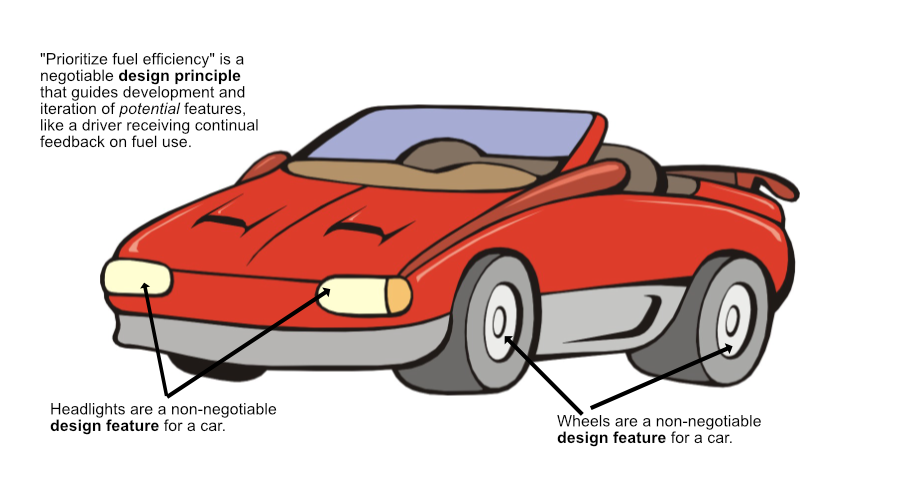What design principles can curriculum designers and teachers use to design engaging project-based learning environments that help students develop usable knowledge and social and emotional learning? In this manuscript, we describe design principles that others can use to develop project-based learning environments. The ML-PBL curriculum design and research team initially had two sets of design challenges: 1) align the 3D science learning in the Framework for K-12 for Science Education with Project-based Learning (PBL) pedagogy and, 2) sustain teacher change in practice to achieve the meaningful and deep pedagogical change predicated by the Framework and PBL.
We explain how the ML-PBL curriculum uses a systems approach to develop design features, which were tested, refined, and ultimately instantiated into design principles. Our systems approach includes the integration of curriculum materials for teachers and students, 3-dimensional assessment tasks, and sustained professional learning. The design features and design principles informed the development of the ML-PBL system, and in particular, the way that professional learning changed over time based on extensive large-scale and small-scale data.
Design Features and Design Principles
What are design features and how do they differ from design principles? Design features are what must be in a design, and are non-negotiable features. For example, in a car design they would be the wheels and headlights of a car. The design principles inform all iterations and are negotiable. In the car example, design principles could be that the car should be fuel-efficient. The principle of fuel efficiency would be used to test all iterations. The car’s wheels and headlights may go through several iterations before they adequately address the principle of fuel efficiency.

Non-negotiable Design Features versus Negotiable Design Principles
The design features of the ML-PBL curriculum are non-negotiable and framed the initial, first year, materials. The design features inform the teacher materials, professional learning, and assessment. These features include the 6 features of PBL.
Design Features
- PBL units start with a Driving Question about a natural phenomenon to be explained or an engineering problem to be solved.
- PBL units focus on 3D learning goals that align with key science standards and frame demonstration of student mastery on performance-based assessments.
- The units require participation in NGSS scientific practices – processes of problem-solving central to expert performance in the discipline and in the community.
- Students, teachers, and community members engage in collaborative sensemaking activities to build shared knowledge to apply toward the solutions to the DQ.
- While engaged in the practices of science, students are scaffolded to help them make use of teacher prompts and their peers to participate in activities otherwise considered beyond their ability.
- Over time, students iteratively create tangible products that address the DQ using science and/or engineering practices with increasing sophistication. These shared artifacts are publicly accessible representations of the class’s learning.
We describe in depth the iterative and data-driven process of creating design principles that sustain teacher change in practice, by creating the environments in professional learning that motivated teacher discussion, reflection, community building, and risk-taking.
Design Principles
- Design Principle 1 - Adaptive: Lesson features deeply engage teachers in the PBL practices of situated learning to engender productive adaptation of materials and innovate their teaching.
- Design Principle 2 - Responsive: Lesson features provide opportunities for teachers to set up and reinforce practices that promote science teaching responsive to the cultures and ideas of students.
- Design Principle 3 - Enjoyable and Intellectually Satisfying: Lesson features accentuate and promote opportunities for science learning and teaching to be an enjoyable and intellectually satisfying problem to promote motivation for continued engagement.
Design Principle 1 can be seen in the artifact in ML-PBL curriculum materials that enables teacher adaptation according to expertise and relevancy to context. For example, in Birds “How can I help the birds in my community grow up and thrive?” Students are able to select a local bird to focus on, as well as a bird that has significance to their family.
Design Principle 2 includes the adaptation Principle 1, but emphasizes culturally relevant practices responsive to local/family culture, race, and context. For example, in the third-grade Squirrels unit, “Why do I see so many squirrels but I can’t find any stegosauruses?” students can create a play, a story, a model, or a combination of these as their final artifact. In addition, this unit fosters social action by considering other community-based aspects that enable squirrels such as the need for more trees in the area.
Design Principle 3 likewise is informed by Principles 1 and 2, but suggests that the development of adaptation and responsive teaching be driven by teachers enjoying their students’ learning and achieving satisfaction. Here the team found that teachers enjoy a curriculum that honors teachers’ intelligence and is not prescriptive. They also enjoy active collaboration with peers, and appreciate shared reflection.
Researchers and curriculum designers will find the ideas we present useful because of the focus on taking an evidence- and literature-driven approach to the study of curriculum design. We also elevate the critical role that teachers play in the development and iteration process of designing usable and worthwhile curriculum materials, by centering teachers’ engagement with the materials. In addition, we conclude by discussing future research related to how adaptation, cultural responsiveness, or intellectual satisfaction can be conditions for teacher investment and motivate teacher change.

